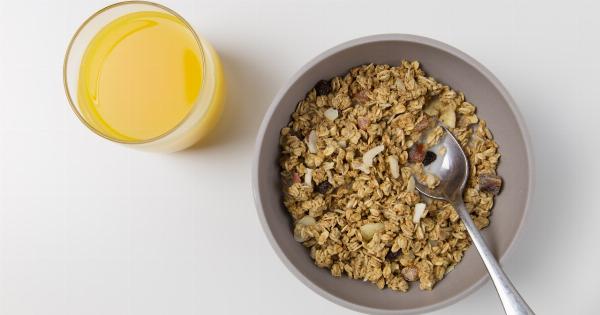Diabetes is a chronic condition characterized by high blood sugar levels. It affects millions of people worldwide and can lead to various complications if not properly managed.
While genetics and other factors play a significant role in the development of diabetes, lifestyle choices, including diet, also play a crucial role. Making healthier choices in your diet can help reduce the risk of developing diabetes and manage the condition if already diagnosed. Here are some effective ways to lower diabetes risk through your diet.
1. Choose Complex Carbohydrates
When it comes to carbohydrates, not all are created equal. Choosing complex carbohydrates over simple ones can help prevent spikes in blood sugar levels. Simple carbohydrates, such as refined grains and sugary foods, can cause blood sugar to rise quickly.
On the other hand, complex carbohydrates, such as whole grains, legumes, and vegetables, are rich in fiber, which helps slow down digestion and stabilize blood sugar levels.
2. Incorporate High-Fiber Foods
Fiber is an essential nutrient for overall health, especially for managing diabetes. Soluble fiber, in particular, can help regulate blood sugar levels by slowing down the absorption of sugar.
Foods rich in soluble fiber include oats, legumes, fruits (such as apples and citrus fruits), and vegetables (such as Brussels sprouts and broccoli). Aim to include these high-fiber foods in your daily meals for better diabetes management.
3. Limit Added Sugars
Consuming excessive amounts of added sugars can contribute to weight gain and increase the risk of developing type 2 diabetes. Added sugars, such as those found in sodas, candies, and baked goods, provide empty calories and lack nutritional value.
Opt for naturally sweet foods like fruits to satisfy your sweet tooth while providing essential vitamins and minerals.
4. Reduce Saturated and Trans Fats
A diet high in saturated and trans fats can lead to insulin resistance and increase the risk of type 2 diabetes. These unhealthy fats are commonly found in fried foods, processed snacks, and fatty cuts of meat.
Replace saturated fats with healthier alternatives, such as olive oil, avocados, and nuts, which contain monounsaturated and polyunsaturated fats that are beneficial for heart health.
5. Include Lean Protein
Protein is an important component of a balanced diet and can help stabilize blood sugar levels. Opt for lean sources of protein, such as poultry, fish, tofu, and legumes, which are low in saturated fats.
Including protein in each meal can also help promote satiety, preventing overeating and aiding in weight management.
6. Control Portion Sizes
Controlling portion sizes is crucial for managing blood sugar levels and overall health. Overeating can lead to weight gain, which is a significant risk factor for diabetes.
Use smaller plates and bowls to help manage portion sizes, and practice mindful eating by paying attention to hunger and fullness cues.
7. Stay Hydrated
Drinking enough water throughout the day is essential for overall health, including diabetes management. Water helps maintain proper hydration, aids digestion, and supports kidney function.
Replace sugary drinks like soda and juice with water, herbal tea, or infused water for a healthier hydration option.
8. Opt for Healthy Cooking Methods
The way you cook your food can impact its nutritional value. Opt for healthier cooking methods, such as steaming, baking, grilling, or sautéing, instead of deep-frying or pan-frying.
These methods can help retain nutrients and prevent the formation of harmful compounds that may increase the risk of chronic diseases, including diabetes.
9. Plan Meals and Snacks
Planning meals and snacks in advance can help you make healthier choices and avoid impulsive food decisions. Aim for a balanced plate that includes a variety of vegetables, whole grains, lean protein, and healthy fats.
Incorporate snacks that are rich in fiber and protein to keep blood sugar levels stable throughout the day.
10. Seek Professional Advice
If you have diabetes or are at risk of developing the condition, it’s crucial to seek professional advice from a registered dietitian or a healthcare provider.
They can tailor a diet plan to your specific needs and provide ongoing support and guidance to help you manage your condition effectively.



























